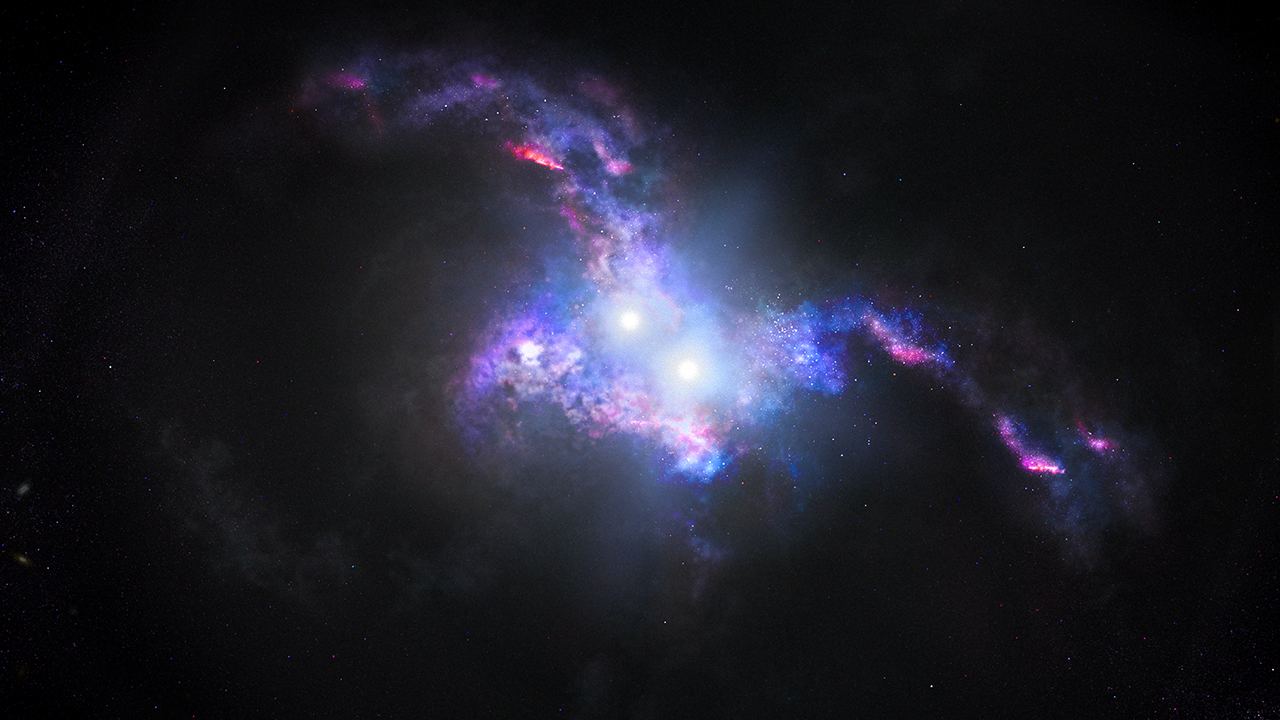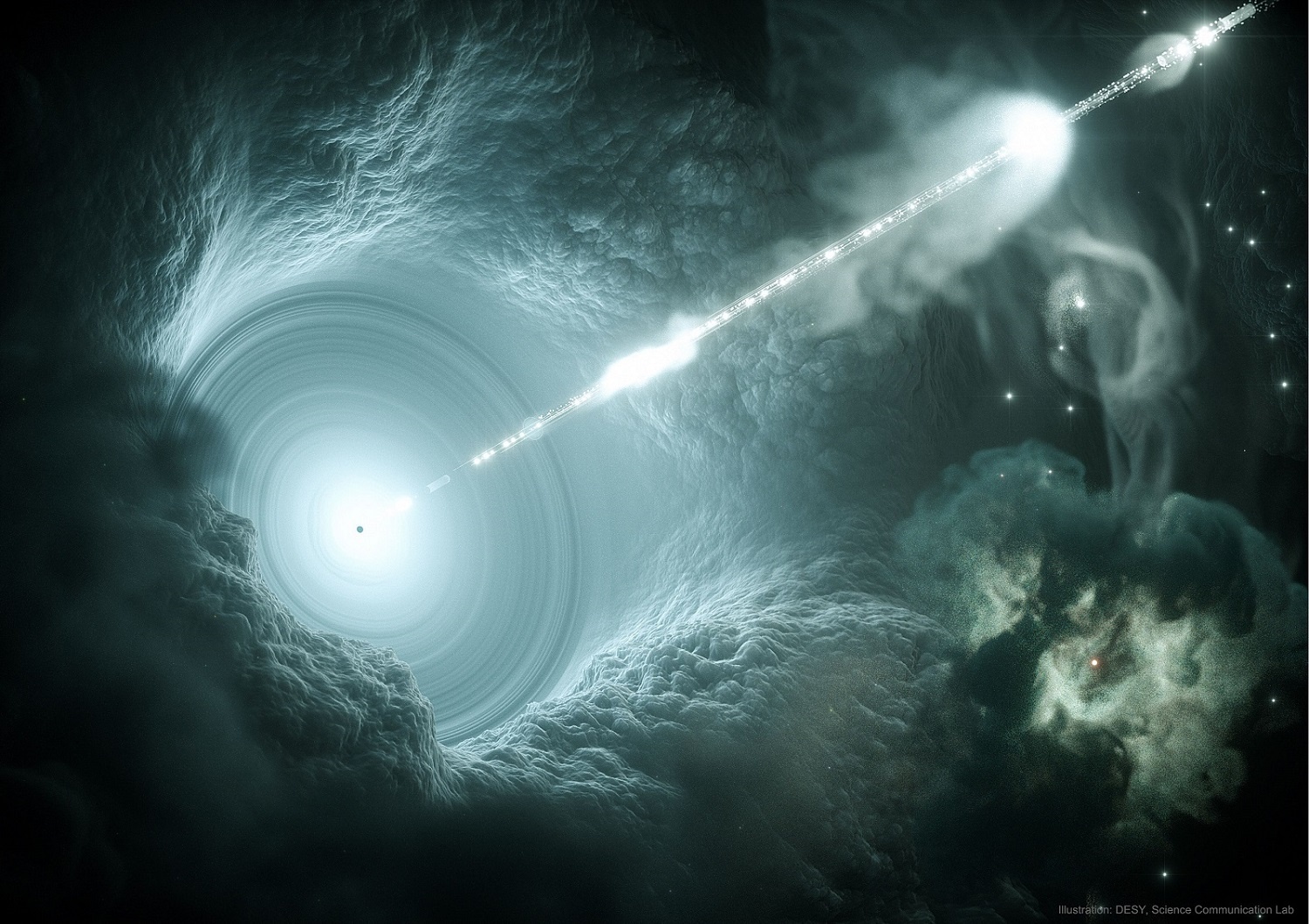What’s better than a quasar? That’s right, two quasars. Astronomers have spotted for the first time two rare double-quasars, and the results show us the dynamic, messy consequences of galaxy formation.
Continue reading “Astronomers see a Rare “Double Quasar” in a Pair of Merging Galaxies”A new Technique Could use Quasars to Directly Measure the Expansion Rate of the Universe
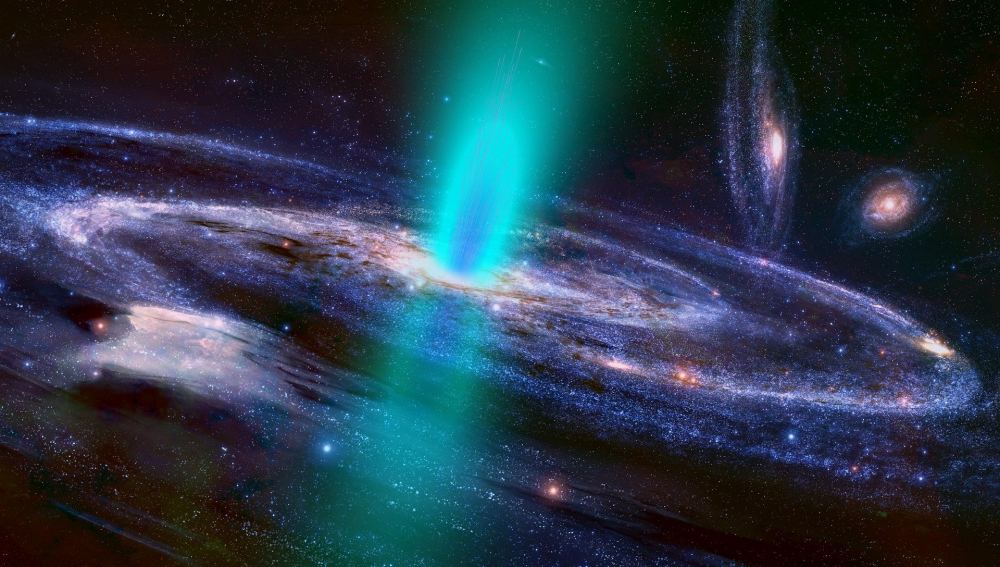
One of the biggest challenges to measuring the expansion of the universe is the fact that many of the methods we use are model-dependent. The most famous example is the use of distant supernovae, where we compare the standard brightness of a Type Ia supernova with their apparent brightness to find their distance. But knowing the standard brightness depends upon comparing them to the brightness of Cepheid variables which is in turn determined by measuring the distances of nearby stars via parallax. Every step of this cosmic distance ladder depends upon the step before it.
Continue reading “A new Technique Could use Quasars to Directly Measure the Expansion Rate of the Universe”Almost all High-Energy Neutrinos Come From Quasars

Buried under the ice at the South Pole is a neutrino observatory called IceCube. Every now and then IceCube will detect a particularly high-energy neutrino from space. Some of them are so high energy we aren’t entirely sure what causes them. But a new article points to quasars as the culprit.
Continue reading “Almost all High-Energy Neutrinos Come From Quasars”A New Technique to Find Cold Gas Streams That Might Make up the Missing (Normal) Matter in the Universe
Where is all the missing matter? That question has plagued astronomers for decades, because the Universe looks emptier than it should, given current theories about its makeup. Most of the Universe (70%) appears to be composed of Dark Energy, the mysterious force which is causing the Universe’s rate of expansion to increase. Another 25% of the Universe is Dark Matter, an unknown substance which cannot be seen, but has been theorized to explain the otherwise inexplicable gravitational forces which govern the formation of galaxies. That leaves Baryonic Matter – all the normal ‘stuff’ like you, me, the trees, the planets, and the stars – to make up just 5% of the Universe. But when astronomers look out into the sky, there doesn’t even seem to be enough normal matter to make up 5%. Some of the normal matter is missing!
Continue reading “A New Technique to Find Cold Gas Streams That Might Make up the Missing (Normal) Matter in the Universe”Astronomers are Starting to Understand the Quasar Lifecycle

Supermassive black holes have a complicated lifecycle. Sometimes they’re “on”, blasting out tremendous amounts of energy, and sometimes they’re “off’, where they sleep like dragons in their caves. By comparing the proportion of high-energy to low-energy waves emitted by quasars, astronomers are beginning to pin down how many black holes are sleeping, and when they’re likely to wake back up.
Continue reading “Astronomers are Starting to Understand the Quasar Lifecycle”Gravitational lenses could be the key to measuring the expansion rate of the Universe
One of the tenets of our cosmological model is that the universe is expanding. For reasons we still don’t fully understand, space itself is stretching over time. It’s a strange idea to wrap your head around, but the evidence for it is conclusive. It is not simply that galaxies appear to be moving away from us, as seen by their redshift. Distant galaxies also appear larger than they should due to cosmic expansion. They are also distributed in superclusters separated by large voids. Then there is the cosmic microwave background, where even its small fluctuations in temperature confirm cosmic expansion.
Continue reading “Gravitational lenses could be the key to measuring the expansion rate of the Universe”Quasars can twinkle?
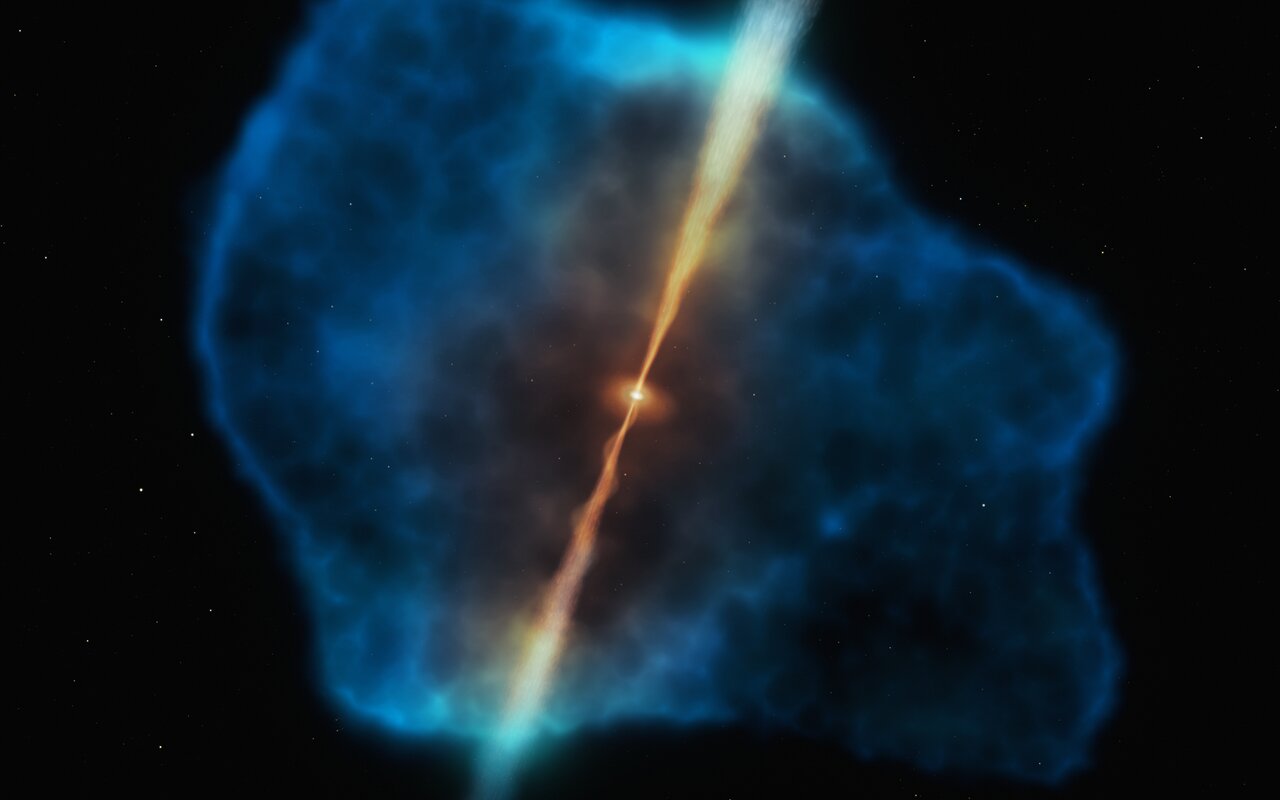
It turns out you can teach an old dog new tricks. With a recent upgrade to a 50-year-old radio telescope, astronomers have spotted nearly a dozen of a rare class of quasars, ones capable of flickering in less than an hour.
Continue reading “Quasars can twinkle?”There’s a Black Hole With 34 Billion Times the Mass of the Sun, Eating Roughly a Star Every Day
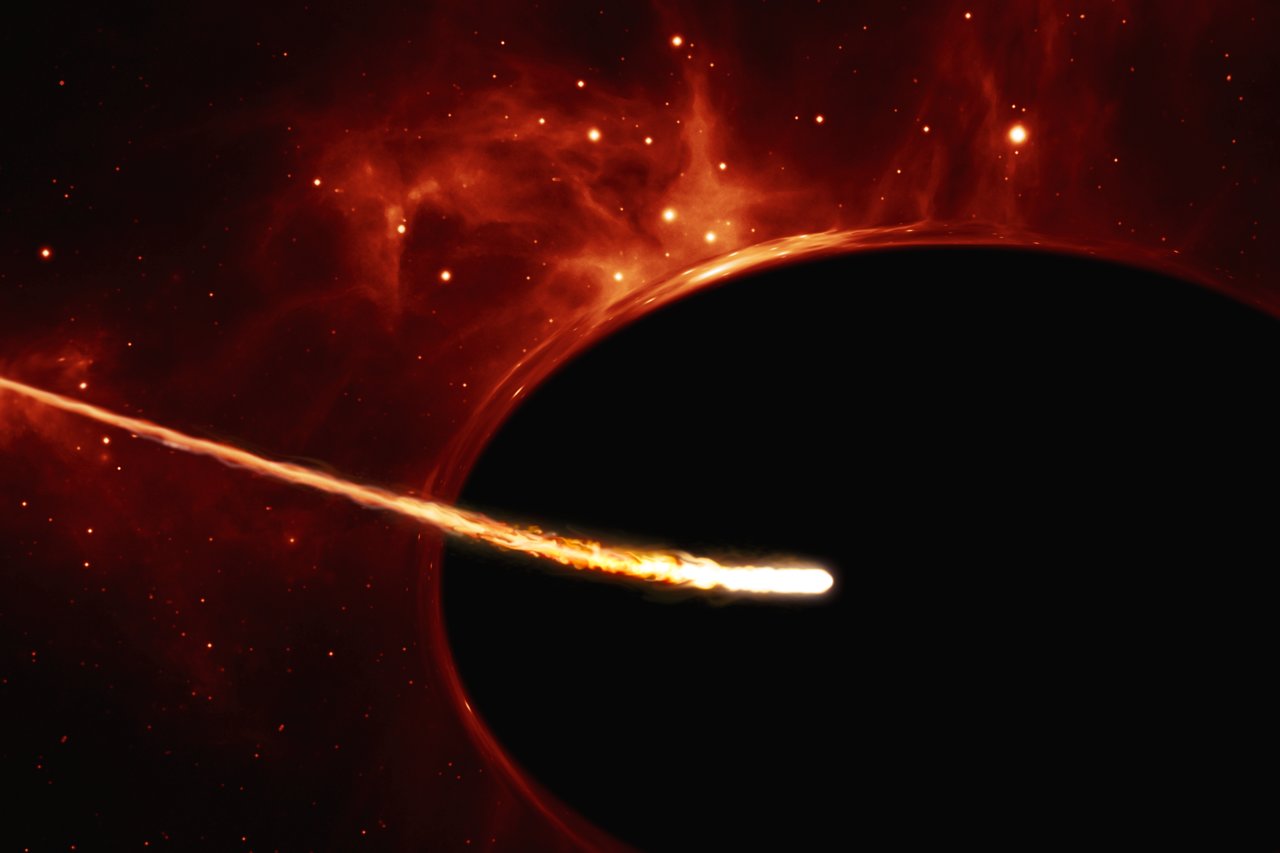
In the 1960s, astronomers began theorizing that there might be black holes in the Universe that are so massive – supermassive black holes (SMBHs) – they could power the nuclei of active galaxies (aka. quasars). A decade later, astronomers discovered that an SMBH existed at the center of the Milky Way (Sagittarius A*); and by the 1990s, it became clear that most large galaxies in the Universe are likely to have one.
Since that time, astronomers have been hunting for the largest SMBH they can find in the hopes that they can see just how massive these things can get! And thanks to new research led by astronomers from the Australian National University, the latest undisputed heavy-weight contender has been found! With roughly 34 billion times the mass of our Sun, this SMBH (J2157) is the fastest-growing black hole and largest quasar observed to date.
Continue reading “There’s a Black Hole With 34 Billion Times the Mass of the Sun, Eating Roughly a Star Every Day”How the World’s Biggest Radio Telescope Could be Used to Search for Aliens

In 2016, China’s Five-hundred-meter Aperture Spherical radio Telescope – the largest single-aperture radio telescope in the world – gathered its first light. Since then, the telescope has undergone extensive testing and commissioning and officially went online in Jan of 2020. In all that time, it has also been responsible for multiple discoveries, including close to one hundred new pulsars.
According to a recent study by an international team of scientists and led by the Chinese Academy of Sciences (CAS) suggests that FAST might have another use as well: the search for extraterrestrial intelligence (SETI)! Building on their collaboration with the non-profit science organization Breakthrough Initiatives, the authors of the study highlight the ways in which FAST could allow for some novel SETI observations.
Continue reading “How the World’s Biggest Radio Telescope Could be Used to Search for Aliens”Blazar Found Blazing When the Universe was Only a Billion Years Old
Since the 1950s, astronomers have known of galaxies that have particularly bright centers – aka. Active Galactic Nuclei (AGNs) or quasars. This luminosity is the result of supermassive black holes (SMBHs) at their centers consuming matter and releasing electromagnetic energy. Further studies revealed that there are some quasars that appear particularly bright because their relativistic jets are directed towards Earth.
In 1978, astronomer Edward Speigel coined the term “blazar” to describe this particular class of object. Using the telescopes at the Large Binocular Telescope Observatory (LBTO) in Arizona, a research team recently observed a blazar located 13 billion light-years from Earth. This object, designated PSO J030947.49+271757.31 (or PSO J0309+27), is the most distant blazar ever observed and foretells the existence of many more!
Continue reading “Blazar Found Blazing When the Universe was Only a Billion Years Old”
